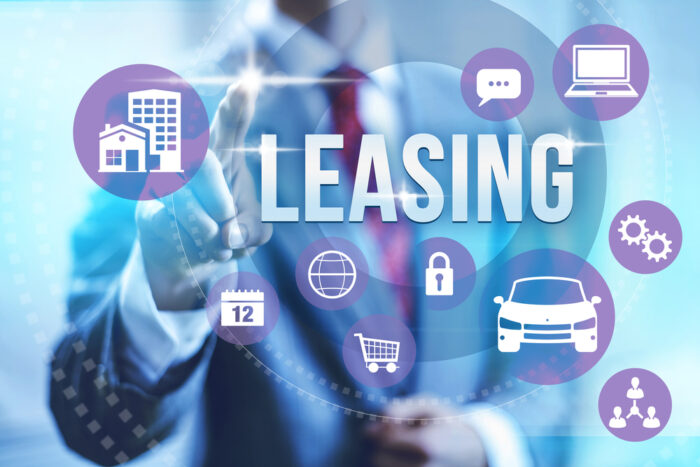
Capital leases are long-term rental agreements that enable companies to acquire the use of an asset without incurring a loan or taking ownership of the asset. In a capital lease, a company makes payments to a lessor (the owner) in exchange for continued use of the asset for an agreed-upon period. The company will pay lower prices than if it had purchased the asset outright, and can better manage its cash flow by spreading out payments over a longer period.
Benefits of Capital Leases
They offer several key benefits for businesses in the United States. They allow businesses to acquire assets without having to put down large deposits or take out an expensive loan. This provides more cash flow for other business expenses, such as marketing and research.
Additionally, businesses can benefit from a capital lease because the lease itself becomes an asset of the company. The land or asset is kept on the company’s books and can be depreciated, reducing taxable income while enhancing business value and increasing equity in the company.
Finally, some capital leases may include purchase options which give companies the option to buy the leased asset after all payments have been made under set terms and conditions. This gives companies flexibility in their decision-making processes with regard to large purchases or investments.
Types of Capital Leases

They are generally divided into four types:
1. Leveraged Leases
A leveraged lease is a type of capital lease in which the lessee has made a down payment that covers only part of the purchase price. The leasing company finances the rest of the cost and receives periodic payments from both the lessee as well as any additional investors that have joined in on the investment.
2. Direct Financing Leases
A direct financing lease is one in which there is no down payment from the lessee but rather periodic payments made to cover the entire cost of the asset over time. The leasing company may also collect fees from any additional investors, who are typically involved at the inception of this type of lease agreement.
3. Sale-Leaseback Agreements
This type of agreement involves an initial sale and then subsequent leased-back transfer of limited use rights by one party to another party who pays rent for those use rights periodically throughout the term. Sale-leaseback agreements generally have preferential tax treatment which can make them attractive to businesses looking for alternative sources to finance equipment purchases while having limited access to borrowing or equity capital.
4. Operating Leases
An operating lease tends to be shorter than other capital leases and is often used by companies when they require flexibility in length and termination conditions or prefer not to own an asset longer term for internal control or tax purposes such as financial reporting requirements under IFRS 16 regulations or US GAAP leasing guidelines.
Accounting

Under US Generally Accepted Accounting Principles (GAAP), if a lease has certain characteristics, it is to be considered a capital lease for accounting purposes. Capital leases are treated differently under GAAP than operating leases. A major difference between capital and operating leases is that capital leases are recorded as an asset on the balance sheet.
Accounting for both types of capital leases requires adding a liability to the balance sheet related to future payments of the leased item; however, in addition to the liability, accounting for a capital lease also includes recognition of the asset being leased.
Companies must make an assessment at lease commencement as to which method should be applied and must maintain supporting documentation indicating their basis for calculating their selection method. Calculations will look at factors such as whether or not ownership will eventually transfer to another party and whether there is an implicit rate associated with any residual assets that are returned upon termination of the contract (also known as bargain purchase options).
Common Uses of Capital Leases
This type of financing agreement has a number of advantages for businesses in the United States, including:
- Reducing capital expenditures: In some cases, firms with limited access to capital may be unable to purchase expensive fixed assets outright. Capital leases allow these firms to make periodic payments that gradually lead toward ownership without having access to upfront payment requirements.
- Securing immediate use of assets: Capital leases provide an advantageous way for companies to gain access to important assets without making large upfront payments or waiting for more favorable terms from another party seller.
- Accruing tax benefits: Certain types of capital leases may allow companies in the USA to benefit from tax savings through accelerated depreciation or other deductions that they can claim on their taxes over several years’ time.
- Maintaining budgets: For certain types of businesses that cannot predict when additional funds will be needed, capital leasing agreements may help relieve the financial strain by providing them with consistent cash flow throughout longer terms than traditional loans and leasing arrangements provide.
Pitfalls of Capital Leases

One common mistake is failing to account for any additional costs that may occur once a lease has been taken out. These costs may include higher-than-expected maintenance costs due to the age or condition of the leased asset, as well as changes in interest rates that could lead to an increase in the regular payment amounts. Additionally, businesses should check whether any penalties apply if there is early termination or implementation of other amendments made during the lease period.
Businesses should also bear in mind that capital leases are legally binding contracts and so compliance with their terms must be followed closely. Breaching these terms – such as attempting to move a leased asset away from its current location – could result in unexpected additional costs or lost access to certain terms and conditions originally included in the contract. Furthermore, different states have different laws governing capital leases which companies need to understand before entering into them.
Conclusion
Capital leases are a great way for businesses to acquire the assets they need without having to take on debt or make large upfront payments. By using capital leases, businesses can generate more income while also achieving their long-term goals. With the help of an experienced financial advisor and accountant, businesses in the USA can take advantage of these kinds of lease arrangement and benefit from acquiring new equipment for their business operations.
















